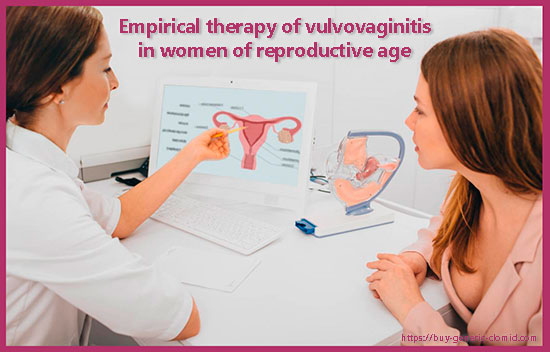Empirical therapy of vulvovaginitis in women: At the turn of the millennium, a real revolution took place in our understanding of vaginal infections. The Koch postulate “one disease-one pathogen”, which was once accepted as an axiom, was replaced by the understanding that in the vast majority of cases these conditions have a mixed etiology, and nosological forms caused by a single pathogen are rare. When treating a patient with bacterial vaginosis or vaginitis, the obstetrician-gynecologist should be guided by new data on the causes and pathogenesis of these diseases. We won’t talk about clomid today.
“Lonely” microbes are rare, usually there is a “cocktail” of bacteria, fungi, viruses and protozoa. A wide variety of” permanent inhabitants “of the biotope ensures its normal functional state, and also prevents colonization by” external ” obligate and facultative pathogens of diseases. In one patient, mutually exclusive states of the vaginal microbiome can be observed simultaneously. For example, candidiasis or aerobic vaginitis, the” instigators ” of which need oxygen, and bacterial vaginosis caused by anaerobic microorganisms.
J. Sobel distinguishes two types of mixed infections: mixed infection and co-infection. In mixed infections, all pathogens jointly damage the mucous membrane of the genital tract, entering into complex relationships aimed at increasing virulence and drug resistance. Coinfections are detected against the background of an active inflammatory process caused by a dominant pathogen. The rest remain invisible and manifest themselves only after the elimination of the predecessor.
Antibiotic resistance is an interdisciplinary and inter-state problem, for the effective solution of which, both at the hospital and outpatient level, it is necessary to consolidate doctors of different specialties. The growing resistance of microorganisms to antibiotics poses a difficult task for the obstetrician-gynecologist. The scientific justification for the combination of most vaginal infections and vaginal dysbiosis makes doctors more scrupulous in their diagnosis and treatment. A drug for the local therapy of vulvovaginitis should “cover” the entire spectrum of possible pathogens due to its constituent substances of multidirectional action. In order to avoid reducing compliance, instead of several drugs, it is advisable to prescribe a combined drug with the widest possible spectrum of action, covering most of the potential pathogens of vaginal infection – bacteria, fungi and protozoa.
Empirical therapy of vulvovaginitis: Materials and methods
Exclusion criteria:
- hypersensitivity to one or more components of the drug Gainomax;
- taking antiseptics, antibiotics, and antibiotics at the time of inclusion in the study;
- the need for systemic use of glucocorticosteroids, cytostatics and systemic antibiotics;
- documented HIV infection, syphilis and other sexually transmitted infections (chlamydia infection, gonorrhea, trichomoniasis) detected during the screening stage;
- acute somatic diseases;
- the period of pregnancy or breastfeeding.
Patient follow-up included consecutive visits.
At the first visit (screening, inclusion in the study), the written informed consent of the patients was obtained, the inclusion criteria were checked, and the exclusion criteria were evaluated. After examination and taking the material for analysis (bacterioscopy and pH-metry of vaginal secretions, real-time polymerase chain reaction (PCR) analysis (Femoflor-16)), based on complaints and clinical symptoms, the patients were immediately prescribed empirical therapy with the complex antimicrobial drug Gainomax. All patients were divided into two representative groups. 36 (50%) patients of the first group took Gainomax one suppository once a day for seven days, according to the approved instructions; 36 (50%) patients of the second group – Gainomax one suppository twice a day for three days, according to the approved instructions.

At the second visit, 10-12 days after the completion of seven – or three-day therapy with Gainomax, a control examination was performed, which included a repeated gynecological examination, an assessment of the dynamics of clinical symptoms, the pH index and the microbial landscape of the vaginal discharge. Satisfaction and compliance of therapy, adverse events associated with the use of Gainomax were evaluated, the proportion of patients with a complete cure was determined, and cases of ineffectiveness of therapy were recorded. All medical procedures performed in the study were routine, used in everyday clinical practice, which determined the non-interventional (observational) nature of the study.
Conclusion
The analysis of the effectiveness of empirical therapy of acute vulvovaginitis using the drug Gainomax showed no complaints of abnormal vaginal discharge at the second visit in 94.4% of patients of the first and 97.2% of patients of the second group. A significant decrease in the volume of vaginal discharge was noted by 83.3% and 80.6% of patients of the first and second groups, respectively. The complete disappearance of unpleasant odors, itching and burning sensations in the vagina was indicated by 91.7% of the patients of the first group and 94.4% of the patients of the second group. When objectively evaluated, normalization of the color of the vaginal walls, moderate volume and “slimy” nature of secretions were recorded in all participants of the study. In most of them, bacterioscopy of vaginal smears after empirical therapy revealed a significant decrease in the number of white blood cells in the visual field. After therapy, yeast-like fungi of the genus Candida were not detected in any patient.
Really like your stuff, thanks for sharing